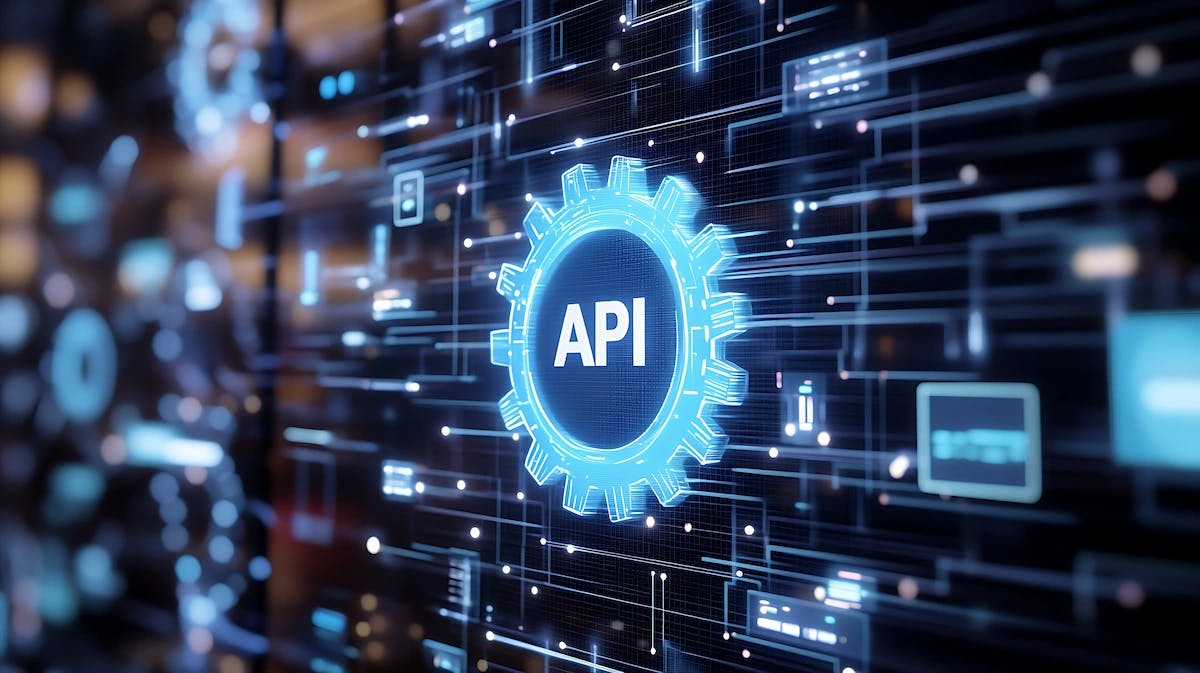
How to Make an AI app?
Starting on how to make an AI can be exciting. AI has moved from science fiction to our everyday world. It's now a handy tool that can do amazing things and make different jobs easier. If you want to build an AI, you create a program to figure things out and get smarter over time. Pretty exciting. But the question is, how do you turn a great idea into a working AI system that’s smart and useful for real-world AI Applications?
This journey into AI innovation starts with learning the basics of AI development. No need for techy mumbo-jumbo; we’ll keep it simple. Maybe you’re excited to create a generative AI app that can write stories or make art, or you want to add AI to the tools you already use. This guide will explain everything in simple, easy steps. We’ll look at choosing the right gear, like TensorFlow or PyTorch, and how to avoid common slip-ups.
This article is your friend in learning how to make an AI. It’s packed with tips and insights on Machine Learning and AI innovation. Discover how to assemble an AI solution tailored to your specific requirements, designed for seamless integration and functionality. So, let’s dive in and understand how to develop a practical AI system step by step. Dive into creating a distinct AI application. It’s time to turn the concept into a tangible innovation.
AI Market Overview
Before we dive into making AI, we need to look at market facts to see why AI tools are so necessary. These facts will show us how big the market is and what chances exist.
- 90% of organizations believe AI will provide a competitive advantage against competitors.
- As per Omdia, by 2025, global AI software revenues are projected to approach $100 billion.
- By 2025, AI is expected to assist in 95% of customer interactions.
Setting the Groundwork to Make an AI App
The journey to build an Artificial Intelligence (AI) system is like beginning a big puzzle, with the ultimate reward being the benefits of developing AI for business. The final piece is crafting something that can think and learn independently, adding significant value to any company. It’s super important to start strong, laying down the foundational parts to make your AI system intelligent and capable. We’re at the starting line here, gearing up to create an AI app that’s not only clever but also a powerful tool for modern businesses.
Clarifying Your AI Objectives
When you start to think about the basics of making your own Artificial Intelligence (AI), the first thing to do is to figure out what you want your creation to tackle. Do you want it to take over repetitive tasks with automation, or are you looking to uncover hidden trends in large piles of data? Whether your AI is going to chat with customers or sort through numbers for smarter decision-making, it’s all about setting the right target:
- Problem-Solving
Make sure you know what you want your AI to fix. This might be reducing how often people mess up when they type in data or making it faster to sift through loads of info. The clearer you are, the better your AI will tackle these issues head-on. - Automation
Focus on picking out those dull tasks that have to be done the same way every time, tasks that are time-suckers for humans but a breeze for machines. Automating these with software can save time and let people do the more interesting work that robots can’t handle.
Skillsets Required for AI Development
It’s not just about having smart people around; it’s about having the right combination of brainpower, creativity, and technical chops to make magic happen. Each team member plays a pivotal role in pushing the boundaries of what your AI can do, ensuring that every line of code, every data point, and every learning algorithm contributes to a system that’s not only smart but also adaptable and forward-thinking.
- Programming
First up, top-notch coding skills are essential. Imagine crafting a code that’s so slick it runs without a hitch. It’s got to be solid from the get-go but also flexible enough so you can build on it over time, kind of like a growing collection of your favorite tunes that gets better with every new addition. - Data Science
Data fuels AI, and having sharp minds that can sift through data is key. These folks know how to spot the gold nuggets in a mountain of info. They toss the junk and polish the good stuff so the AI can get smart. They’re the ones who can turn a heap of facts and figures into something the AI can get its gears around. - Machine Learning
A deep understanding of machine learning is a game-changer. It’s about figuring out the patterns that let AI get better at what it does. The team needs to be savvy with these techniques, applying them to solve real puzzles. It’s like having an ace up your sleeve that gives your AI the smarts to tackle challenges head-on.
Choosing the Right Programming Languages
Consider programming languages as distinct tools, each selected for its ability to simplify tasks rather than complicate them.
- Python
This is like the Swiss Army knife of coding languages. It’s super popular because it’s easy to learn and has a bunch of built-in shortcuts that save time. From beginners to seasoned developers, Python offers an extensive suite of tools suitable for various AI projects. - R
Imagine you have a giant pile of numbers, and you need to find patterns or do some serious math with them. That’s where R comes into play. It’s specially made for stats and can handle loads of data, which is perfect for when your AI has to do heavy-duty math. - Java
When you need your AI to be quick and handle lots of users or information simultaneously, Java is your heavy lifter. It’s been around for a while, so it’s proven to be reliable, and it can scale up for big projects without losing steam.
Required Tools and Environments
Securing the ideal set of tools is like hitting the fast-forward button on your journey to build an app with AI technologies. It’s more than just convenience; it’s about efficiency and precision. With the perfect toolkit, tasks that took days can now be completed in hours, allowing for rapid development and testing. This means you can iterate quickly, making improvements and tweaks on the fly, which is crucial for staying ahead in the fast-paced world of AI technology.
- TensorFlow
This is like getting a free set of power tools for your AI projects. Google makes it and allows you to create learning brains for your AI that can do all sorts of jobs. It has many options to make something simple or super complex, and you don’t have to start from scratch every time. - PyTorch
Made by Facebook, PyTorch is like the Lego set for AI. It’s perfect for piecing together an AI model quickly, especially when you’re just trying to see if your idea works. Its simplicity means it’s accessible for users of all skill levels, not just the tech experts. It’s perfect for getting your AI to learn without writing tons of code. - Cloud Services
Think of cloud services like AWS (Amazon’s service) and Azure (Microsoft’s service) as your high-tech workshop that you can rent. They’ve got all the latest AI tools and space you need to make and run your AI. Even better, they take care of all the heavy lifting, like ensuring there’s enough power and everything runs smoothly so you can focus on the creative part.
Preparing to create Artificial Intelligence means aligning your AI project aims with the right team abilities for AI, choosing the best AI programming languages, and using the necessary AI creation tools. These decisions will affect how effectively your AI performs, its current capabilities, and its potential to improve, putting you on track to achieve impressive results in AI development.
Step-by-Step Process to How to Make an AI
Starting to make a successful AI system is a step-by-step thing. First, you need to gather a bunch of good, solid info. Then you ensure this info is of the best quality, like sorting out the good apples from the bad. After that, you pick the right AI brain for the job. Lastly, you spend much time teaching it to do what you want well. Every single step is super important to make an AI that doesn’t just work but does a great job at what you need it to do.
Data Collection and Processing
The foundation of any artificial intelligence (AI) system is its data. Like a seasoned chef carefully selecting ingredients, the quality and relevance of the data you gather will determine the flavor of your AI outcomes. Collecting data is a deliberate and strategic phase that must align with your AI’s objectives. Whether it’s for predictive analytics, customer service automation, or any problem-solving tasks, each application demands unique datasets.
- Sources of Data
The journey begins by identifying reliable and rich data sources. This might involve public data sets for a generic touch, proprietary information for tailored insights, or real-time data streams for dynamic AI responses. Remember, the breadth and diversity of data sources can greatly enhance the potential of your AI system. It’s about finding the right mix of quantity and quality to feed your algorithms. - Data Cleaning and Preparation
Once data is sourced, it enters the meticulous phase of cleaning and preparation. This is where data is stripped of inconsistencies, redundancies, and irrelevancies, akin to removing impurities from precious metals. Employing robust data cleaning techniques ensures the AI system isn’t misled by noise and errors. Preparation may also include transforming and encoding data to be digestible for machine learning models, setting the stage for accurate and efficient learning. Remember, this step is crucial; an AI system trained on well-prepared data can outperform others by significant margins.
Choosing and Designing the AI Model
Selecting the appropriate architecture for your AI model is akin to choosing the blueprint for a building; it shapes the entire project. The right AI architecture is instrumental in how the system learns and adapts. In this selection process, one must consider the complexity of tasks, the volume and variety of data, and the expected outcomes.
Different Model Architectures
AI architectures come in many forms, with each serving different purposes. From neural networks that mimic human brain functions to decision trees that simplify the problem-solving process, the range is vast. Convolutional neural networks excel in visual data analysis, while recurrent neural networks are better for sequential data like language. The key is to match the architecture with the complexity and type of task at hand to optimize performance.
Model Customization According to the Task
Once a base model is selected, customization is the next step to tailor your AI for the specific task. This might mean tweaking layers in a neural network for deeper analysis or adjusting parameters to fine-tune the learning process. Task-specific AI models are built by integrating domain knowledge into the model, which requires an iterative approach of testing and refinement. The goal is to mold your AI system to your unique requirements, ensuring that it not only learns efficiently but also applies its knowledge most effectively. This bespoke approach to AI model development is critical for a successful artificial intelligence system that delivers precise results and drives innovation.
Training the AI
The pivotal stage in creating an AI system is training. This phase is where your model, equipped with algorithms, begins to learn from the data fed to it. It’s a complex dance of mathematics and statistics that, when choreographed correctly, endows your system with the ability to make decisions and predictions.
- Process of Training
Training an AI is about teaching it to recognize patterns and make informed decisions. Algorithms are the teachers, using vast datasets to present examples and test the AI’s learning. This process isn’t a one-off lesson; it’s a rigorous regimen where the AI repeatedly practices until its responses are accurate. Picture it as a novice learning a language, starting with basics and gradually understanding complex nuances through repetition and correction. - Addressing Overfitting and Underfitting
A common hurdle in training is overfitting, where the AI performs well on training data but fails with new data. It’s like cramming for a test rather than truly understanding the subject. To avoid this, techniques like cross-validation, where the model is tested on unseen data, or pruning, which simplifies the model, are vital. Underfitting, on the other hand, is when the model is too simple to capture the data’s complexity, like trying to understand a novel with a preschooler’s vocabulary. - Validation and Testing of the Model
After training comes validation and testing, crucial steps to ensure your AI’s reliability. Validation adjusts the model to perform better, while testing assesses its real-world performance. It’s akin to a pilot test before a product launch. Thoroughly testing your AI guarantees its application is as effective in practice as it is in theory. This step is not the end but a checkpoint in the ongoing journey of refining your AI, akin to a guide to building AI from scratch that iteratively improves with experience.
Fine-tuning and Optimization
Making your AI better is a lot like training an athlete. Once your AI has learned the basics, you need to help it get better by making small, smart changes. This is how a decent AI becomes a top-notch one. It’s all about improving, just like a runner gets faster by working on their technique.
- Parameter Tuning
Tweaking the settings of your AI, or parameter tuning, is like finding the perfect setting on your oven when baking. It makes a big difference in how well your AI works. These settings control how the AI learns, and changing them can make your AI way smarter. You don’t just guess these settings; you use special methods to determine the best ones. It’s like carefully searching for the best way to make your AI do its job well. - Optimization Techniques
Making your AI work better, or optimization techniques, is not just one thing; it’s a bunch of smart moves to make your AI as accurate and efficient as possible. It’s like using the right tools to smooth out a statue to show its best shape. Techniques like step-by-step improvements, making sure your AI isn’t too complicated, and knowing when to stop teaching it are all tricks to make your AI better. It’s like carving out the unnecessary bits to find the sleek, powerful AI inside.
By doing all of this well, you ensure your AI doesn’t just work; it works well and keeps up with new stuff over time. This is about making your AI ready for anything and turning it into an absolute powerhouse for your business.
Deployment of the AI Model
Putting your AI to work in the real world is a big step. This is when your AI moves from practice to doing the real job. It’s like seeing if all the training has paid off.
- Integration with existing systems
Integrating your AI into your existing business systems is like adding a new musician to a band. They need to integrate flawlessly with the other components in the system. It’s more than just starting a new program; it’s about ensuring it works well with what you already have, improving things without causing problems. To get this right, you must know the tech you use in your business. Whether it’s working with the cloud or older systems, you want the AI to feel like a natural part of your business tools. - Monitoring and maintaining the AI application|
After your AI is up and running, you must keep an eye on it and look after it. It resembles tending to a garden; nurturing and mindful attention is key. You have to water it, trim it, and keep the bugs away. In AI terms, this means watching how well it’s doing, fixing problems before they get big, and keeping it up-to-date. Regular checks help keep it strong and staying on top means your AI will last longer and keep up with new changes.
For the big shots in business, these steps are super important. They make sure that the AI they’re using will do its job well from the start and keep doing it well in the future.
Challenges and Troubleshooting
Building an AI is challenging and comes with some tough challenges. Our guide looks at these issues, like data troubles and needing to be on the same page about what you expect. We talk about how to fix problems to improve AI and how to grow your AI to handle more work.
- Common Pitfalls in Making AI
When you start making an AI, you’ll face problems that can catch you off guard. One common slip-up is not realizing how tough the problem is; it’s like meeting a mountain when you’re only ready for a hill. Then, there’s the issue with data. You might need more, or it might need improvement, which can lead to AI making the wrong calls.
And sometimes, people think AI can do more than it really can. Remember, AI isn’t magic; it’s a tool that needs skill. It can only fix a problem if the problem is clear and if the right data is there. Also, when teams don’t talk well, they might disagree on what the AI should do, leading to an AI that doesn’t fit the business. - Debugging and improving AI performance
After your AI starts working, it’s crucial to keep it running smoothly. Fixing AI problems is tricky because it’s hard to see inside the AI’s “mind.” It’s not just about finding a tiny problem; it’s about figuring out why the AI isn’t doing what you want.
To make AI work better, sometimes you must go back to the start: look at your data again, make your model better, and keep training the AI. It’s like fine-tuning a car engine. It takes know-how and creativity. Problems might come from the AI not matching up with the real world, so you must keep tweaking it and teaching it with new data to stay on point. - Scaling AI Solutions
Making your AI handle more work is like growing from a small shop to a big chain. The concepts remain consistent, though the complexity has significantly increased. Growing means not just working with more data or more complex jobs but also making sure the AI’s foundation can handle the growth without any slip-ups.
This can mean moving to stronger computers, making the AI run more innovative and faster, or getting better at keeping your data safe. But growing an AI isn’t just about the tech stuff. It’s also about keeping things clear: the AI should be able to explain its choices, especially when rules are strict.
From starting an AI to making it big, you must be smart, plan, and never stop learning. Making a strong AI is full of hurdles, but with careful and smart steps, you can get past these problems. The main thing is to keep your eyes on the prize: an AI that works well now and can grow for what comes tomorrow.
Conclusion
As we wrap up our AI development summary, we look back on the journey of making an AI – from starting with clear goals to the careful steps of teaching the model and preparing it for the real world. Each part is essential in the big picture of the AI project recap. This recap not only shows us what we’ve learned but also how important it is to keep up with fast-moving tech changes. To finish, it’s clear: knowing the newest tools and ways to do things is necessary for anyone wanting to make AI.
Peering into the future, a landscape brimming with potential for AI emerges, serving as a beacon of progress and innovation. When we think about AI future prospects, it’s evident that those who understand the full picture of summarizing AI creation will lead the charge. The boost in how much we can do and how quickly we can do it with AI is not just something we aim for; it’s the driving force behind the push for even better AI development. Let’s leave with this idea: In the ever-changing world of tech, being adaptable and always ready to learn are key to concluding AI development and making AI that doesn’t just work well but also sparks new ideas.



Best Practices for Tuning AI Marketing S...
Let's go
Security and Compliance in AI Marketing ...
Let's go
Generative AI API Integration Challenges...
Let's go
